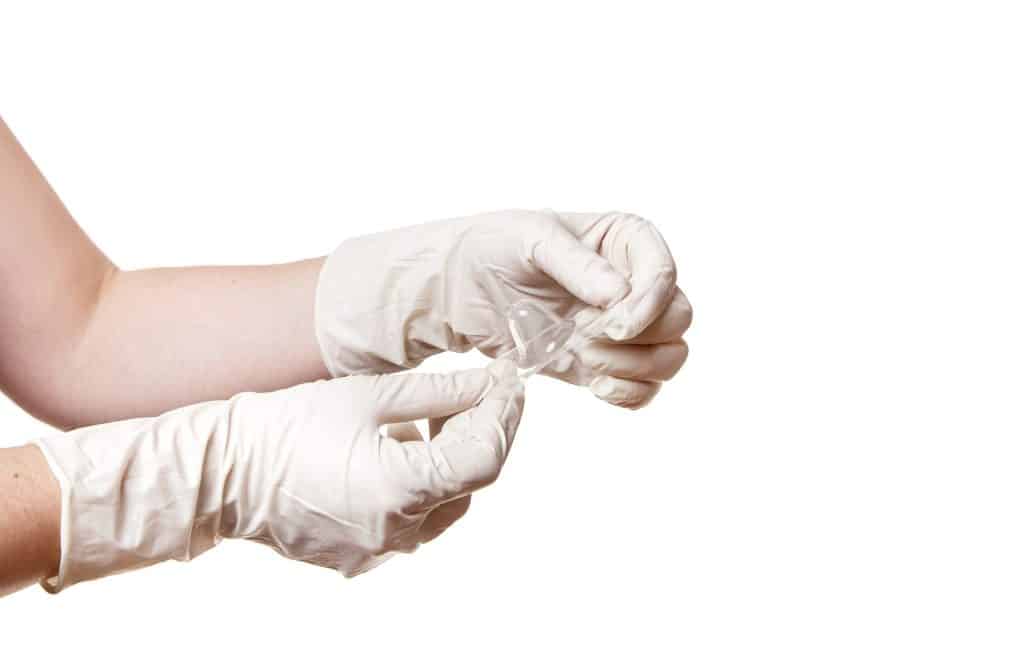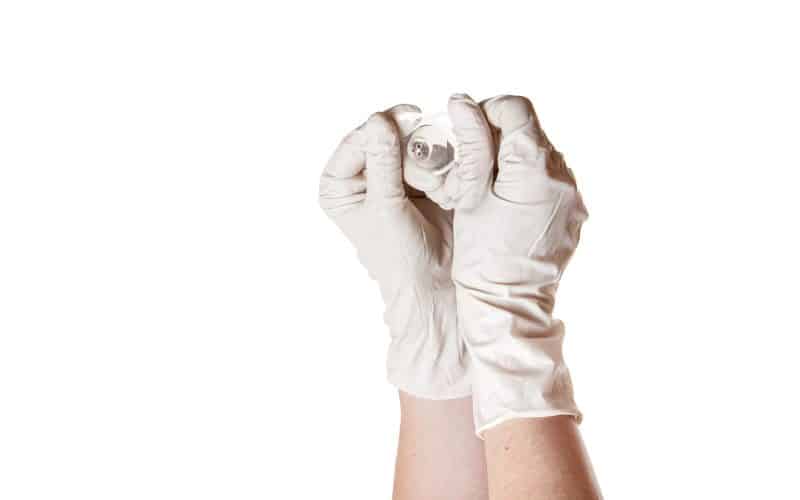While it is universally agreed that breast milk is hands down the best way to feed a baby, that isn’t to say that it doesn’t come with its fair share of difficulties. Nipple shields are one of the more common devices that claim to solve common breastfeeding problems such as nipple soreness, poor latching, and nipple confusion.
Do nipple shields cause gas? When used correctly, nipple shields should not cause gas. Excess gassiness with nipple shield use may be due to incorrect placement of the shield and/or improper sizing of the flange, teat, or holes. Tongue-ties and lip-ties are also sometimes to blame for gassiness while breastfeeding using nipple shields.
This article will explain what nipple shields are and when they can be used. It will provide a quick guide on ways to minimize gas with nipple shield use.
What Are Nipple Shields For?

A nipple shield is a silicone device that is placed over the nipple and areola to help babies and parents who have difficulty breastfeeding.
They are often used to help babies latch deeply when their breastfeeding parent has flat or inverted nipples. They are also used to reduce pain and accelerate healing in nipples that have been irritated or damaged by a poor latch.
Because a nipple shield extends past your actual nipple, it can make it easier for your baby to get a deep latch. This is helpful, especially for babies who are born premature or have latching problems due to tongue thrusting or other oral and dental issues. However, improper placement and the use of an incorrectly sized nipple shield can cause gas and lead a baby to fuss excessively when feeding.
Some parents might only use nipple shields as a short-term solution, such as to help their baby transition from bottle feeding to breastfeeding. They can also be used in the long term, as a solution to problems such as flat or inverted nipples.
It is safe to use nipple shields either way, as long as your baby is eating properly and gaining weight appropriately. A lactation consultant should be able to guide you if you are interested in using a nipple shield or if you think that a nipple shield will help improve your breastfeeding experience.
Minimizing Gas With Nipple Shields
Nipple shields should not cause babies to become gassier than usual. After all, they are there to help you solve breastfeeding issues, not create more of them.
That being said, if you feel that your baby is gassier when you breastfeed with the help of nipple shields, there are ways to troubleshoot them and make them work better for you and your baby.
-
Proper Placement
Occasionally, a poorly placed nipple shield may create space between your breast and the silicone flange where air pockets can form. These air pockets may cause your baby to suck in more air than their stomach can handle while feeding, leading to gas.
A properly fitted nipple shield should feel snug around your areola. It should not move around or become dislodged once your baby begins nursing. It should feel comfortable to you and should not cause your baby difficulty feeding.
To ensure a proper fit, start by moistening the nipple shield’s edges with warm water or nipple cream. Turn the flange inside out and fit your nipple into the teat as deeply as possible without causing discomfort. Stretch the nipple shield out to help it fit snugly over your areola and breast.
Different brands may have slight differences in their nipple shields. Instructions that come with your nipple shield may vary slightly from the method listed above.
-
Nipple Shield Style
Some nipple shields have a round design with a silicone flange that goes all the way around the areola. Others are designed with a cutout that sits below your baby’s nose and allows for greater skin-to-skin contact which is known to improve breastfeeding and overall health.
The nipple shield’s teat, which is the raised part of the nipple that your nipple fits in and your baby latches on to may also come in different styles. A traditional rounded nipple will mimic the shape of a human nipple best and will therefore make it easier when it comes time to transition to breastfeeding without the nipple shield.
On the other hand, an orthodontic nipple that is flattened on one side can help support your baby’s jaw and palate development, as well as prevent the occurrence of dental problems that are often associated with rounded nipple shapes.
-
Nipple Shield Size and Height
A poorly fitted nipple shield can not only irritate and damage your nipples, but it can also give your baby gas and make breastfeeding more complicated.
Unlike your breast which can mold to the shape of your baby’s mouth, a silicone nipple shield will retain its shape and length no matter how well your baby latches on. A nipple shield with a teat that is too long or too short might not fit properly into your baby’s mouth.
If the nipple shield’s teat is too long to fit into your baby’s mouth will make a deep latch uncomfortable for them. Conversely, a teat that is too short will not provide the inside of your baby’s mouth with enough stimulation to encourage a proper suck-swallow-breath nursing pattern, which can cause gas as they may end up swallowing air instead of milk.
Nipple shields should also feel comfortable to you. A well-fitting nipple shield should extend to cover your entire areola. There should also be space between the tip of your nipple and the tip of the teat. If your nipple shield does not meet one or both criteria, you may need to get a smaller or larger-sized nipple shield.
-
Milk Holes
The number of holes in the nipple shield makes a difference as well. Nipple shields with a larger size or greater number of holes will result in a milk flow that is too fast for your baby to keep up with, causing them to drink too fast and take in air, thereby causing gas.
Fewer or smaller holes will result in a slower milk flow, which is better for newborn and premature babies still learning to coordinate their suck-swallow-breath pattern. This may also be helpful if you have a particularly strong let-down that is causing your baby to take in excess air and become gassy.
Generally, it is best to start with the slowest flow rate option available and work your way up until you find what works best for you and your baby.
This guide on bottle nipple selection may help you decide on the proper number or size of milk holes for your nipple shield.
-
Good Latching
A good latch is key to a happy and healthy breastfeeding experience, whether or not a nipple shield is used. Your baby should be able to take the entire teat into their mouth and have their lips flared out over the base.
A poor latch while using nipple shields can cause gas, as air can enter through spaces where their lips are not properly sealed around the nipple shield’s flange.
Sometimes, oral and dental problems such as tongue ties, lip ties, and cleft palates can make it difficult to establish a proper latch. A quick oral check-up from your baby’s pediatrician or dentist can help with identifying such issues and finding solutions such as a nipple shield made with specifically for cleft feeding.
Final Thoughts
To wrap it up, nipple shields can cause gas if used incorrectly. It can also cause nipple soreness, low milk supply, sleep disturbances in your infant, and a host of other issues. To ensure you’re using it correctly, it’s advisable to seek advice from a healthcare professional who knows how to use it properly.
